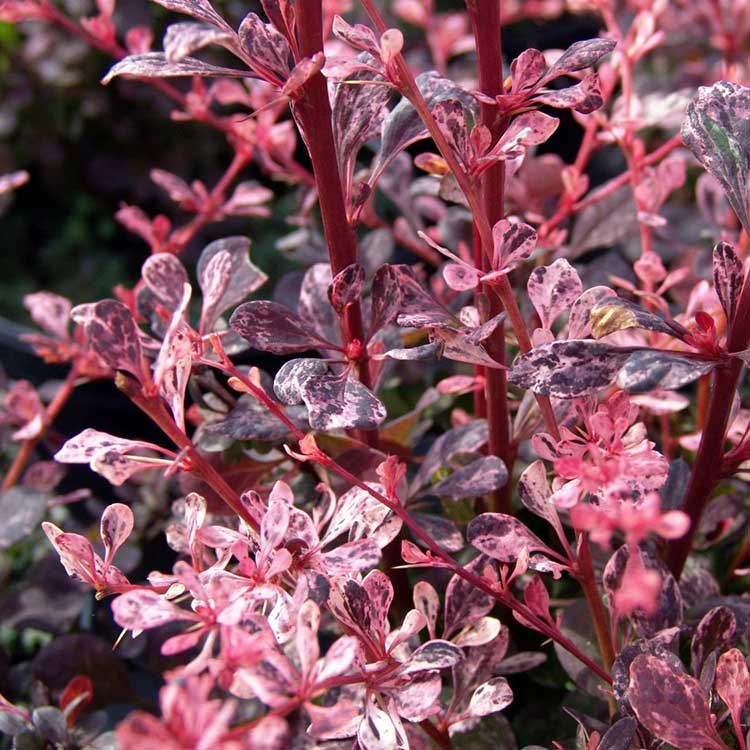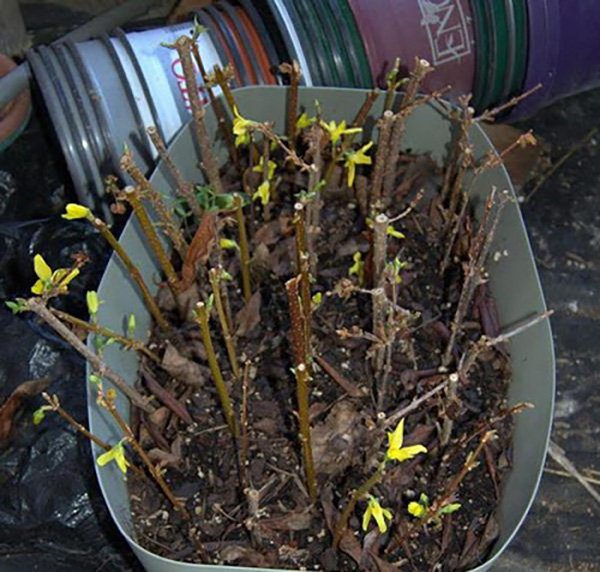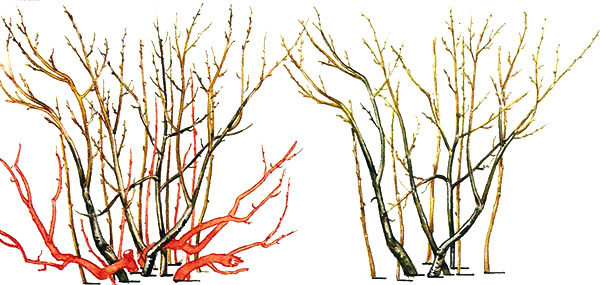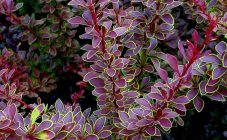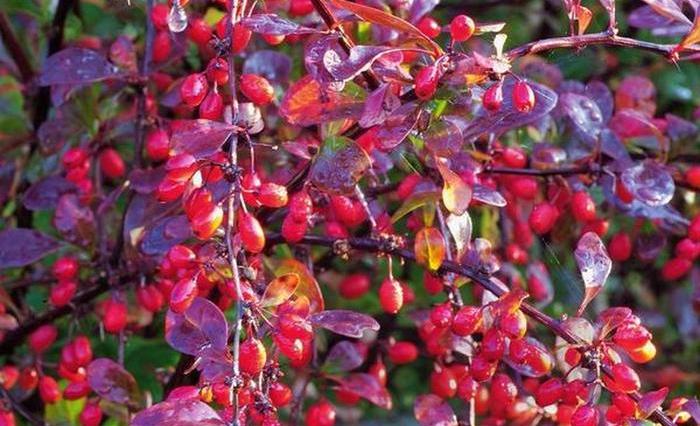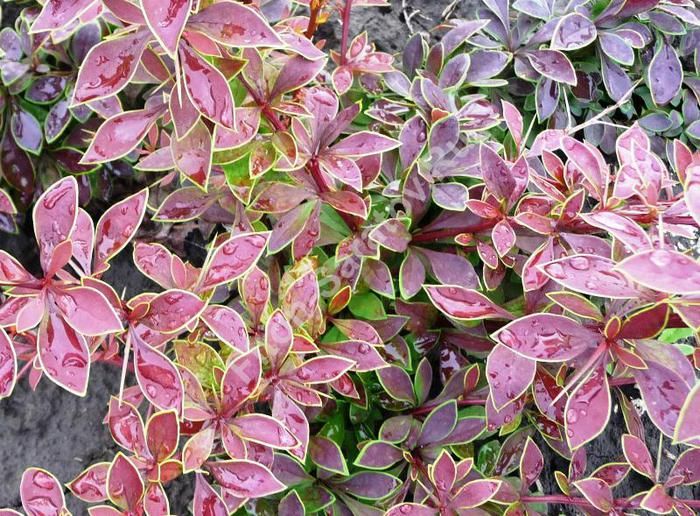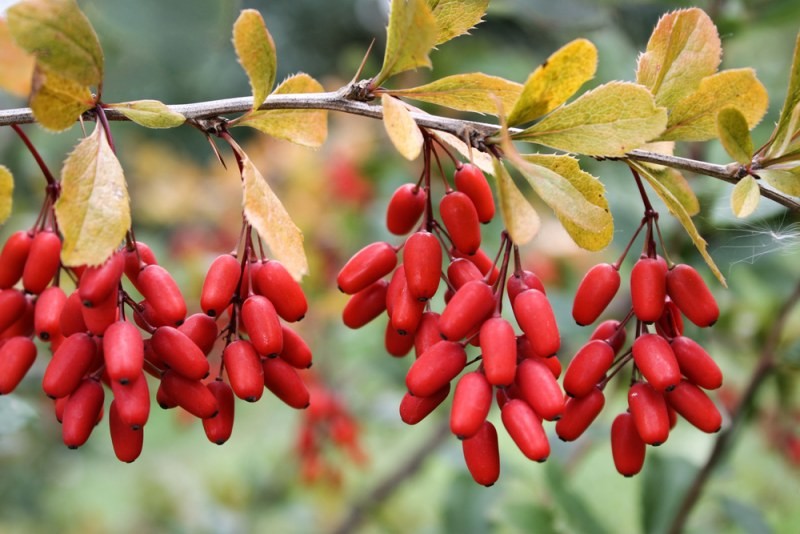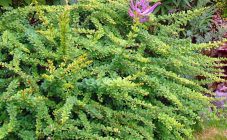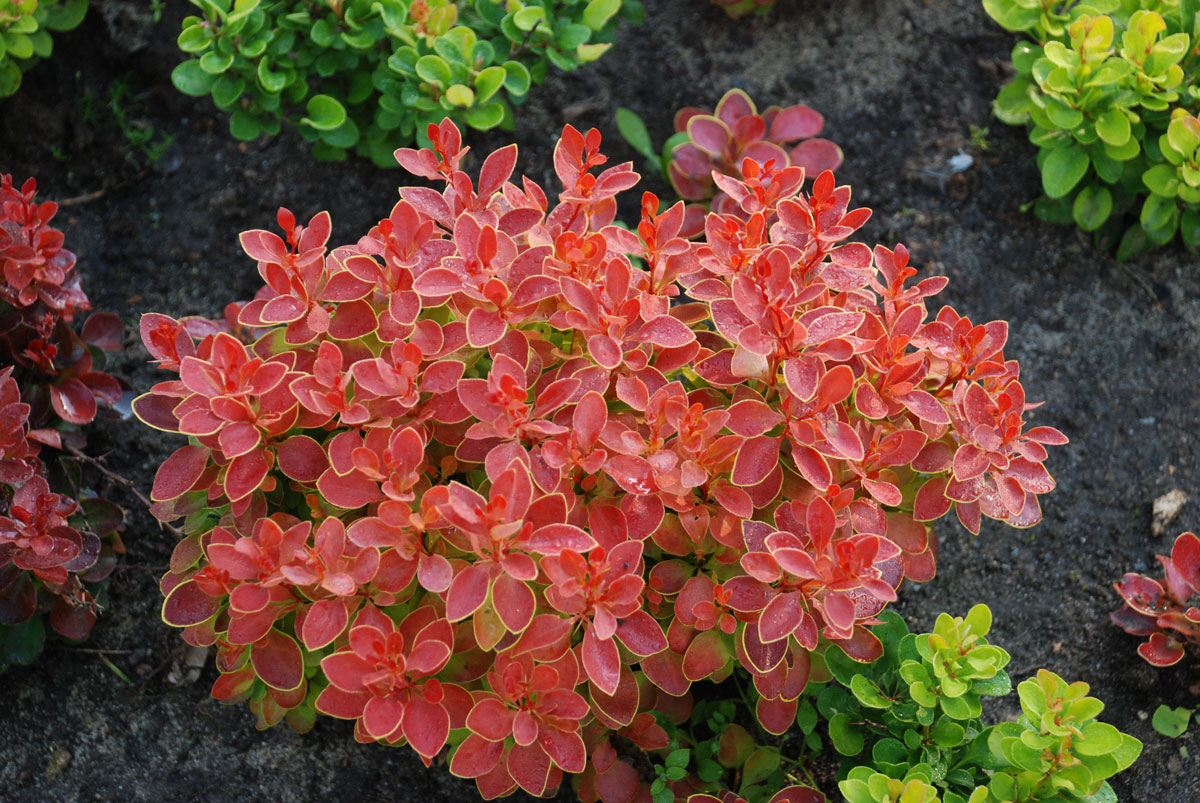This plant is classified as ornamental. It is often used in landscape design to decorate flower beds, dividing or highlighting zones in the garden or in the garden, since its variegated flowers and bright berries allow you to do this as effectively as possible. The Harlequin barberry was first discovered in Japan in the 19th century, where it grew on the slopes of the mountains. In Europe and Russia, it gained popularity relatively recently, only 15-20 years ago (1998-2003), but since this variety is decorative, its fruits are inedible.
Features of the variety
The description of the Harlequin barberry should begin with the fact that this shrub is quite tall. Its height reaches 1.5-2 meters. In width, its dimensions are about the same, therefore, during the flowering period, in the presence of foliage, it looks like a ball. Such an attractive appearance has made it popular among gardeners and gardeners.
The color of the plant is non-standard for our latitudes, which also makes it noticeable and attractive, which means that it can be used in landscape design to highlight areas of attraction on the site. It is often planted around water bodies, including artificial ones, gazebos, recreation areas, and so on.
If properly cared for, the Harlequin Thunberg barberry will have a branched crown with purple leaves, which have white and gray streaks. The shrub does not lose its beauty in the autumn. If in summer it seems that the foliage is white, then closer to autumn it becomes red, then changes color to amber, and before the leaf falls off, it acquires a pleasant golden hue.
Unlike many shrubs, for which flowering is the most beautiful period, foliage forms beauty in the Thunberg Harlequin barberry. His flowers are yellow and very small. It is almost impossible to see them in early May (when the plant has a flowering period). After the end of this period, berries are formed on the bush. They cannot be eaten because they taste bitter and tart. This is another reason the plant is used exclusively for decorative purposes.
Growing features
Before you start to cultivate harlequin barberry on your site, you should carefully study its agronomic characteristics:
- It is recommended to grow a crop on acidic soil or with a low alkali content, which is very convenient, since useful plants, for example, vegetables, rarely grow on such soil, and growing barberry on it allows you to occupy an unused area and decorate it effectively;
- The plant loves the sun very much, but does not tolerate heat well, therefore it should be grown in an area that is well lit and ventilated;
- The culture is one of the frost-resistant (it may not even be covered for the wintering period);
- Regular watering is not required for the plant, the natural level of precipitation is sufficient;
- The only care that is required is periodic feeding and crown pruning.
Planting cuttings on the site is the best way to propagate a plant. As a rule, all gardeners, including beginners, own it. The procedure is performed during the warm season (late spring or early autumn). In the summer, reproduction of the shrub is not recommended, since the root system can be damaged, and the risk that the plant will not take root significantly increases, since during the flowering and fruit formation period it needs a large amount of nutrients, and when transplanting, the mechanisms of supplying them are disrupted.
When planting, it is necessary to prepare the soil (add lime in an amount of not more than 400 grams per cutting, humus and sand). Further, it is recommended to perform a certain sequence of actions:
- The hole is being prepared. Its depth should be about 60 centimeters. The width is recommended to be similar;
- Humus, compost are added to the extracted sod when digging a hole, mineral fertilizers can be added if necessary;
- A drainage layer is laid at the bottom of the hole (these can be natural materials, but you can also use specially created compounds);
- A layer of soil mixed with fertilizers is laid on top of the drainage layer. The thickness of such a layer should be approximately 15 centimeters;
- A stalk is placed in the hole. Moreover, its root collar should be located at ground level. The stalk must be kept strictly vertical, therefore, it is better to plant together, otherwise the plant can be damaged or improperly planted, which will lead to incorrect crown formation and an unattractive appearance;
- After that, the hole should be covered with the remains of fertilized soil and lightly tamped;
- You can leave a small depression for mulching, as well as for retaining water when watering;
- The planted cutting must be watered. One bucket is enough. The water should be at room temperature (about 20 degrees Celsius). If necessary, it can be preheated;
- After the first watering, it is recommended to put a mulching layer of peat or dry grass (straw) in the hole.
In the future, watering the crop is required only in case of prolonged drought. If there is no precipitation, then watering should be carried out approximately once every two weeks in a volume of 10-12 liters. The plant is drought tolerant, so excessive watering can be harmful, for example, the root system will begin to rot.
Periodic pruning of the shrub is an important element of care. The following types of this operation are performed:
- Molding. It should be carried out to give the bush an attractive appearance;
- Sanitary. It is carried out in spring and autumn to remove damaged branches and prevent infection of the entire plant;
- Anti-aging. It is performed every few years in order to cut off old branches, in the place of which new ones will grow.
Since the plant is decorative, top dressing can be omitted. Its only effect is faster growth of the bush. Humus, compost, peat are usually used as fertilizers. You can also use chemical compositions. They should be introduced during the flowering period.
The merits and demerits of culture
The main advantage of barberry is its attractive appearance, which allows it to be used in landscape design. Due to its color scheme, it goes well with other colors and decorative elements.Moreover, it is also frost-resistant, drought-resistant and does not require significant maintenance.
The only drawback noted by many gardeners is the presence of thorns in the plant. However, it is more than covered by the existing advantages, so the popularity of barberry is only growing, and the answer to the question of which variety of this crop to choose becomes obvious, since the simplicity of reproduction, attractive leaf color and other positive characteristics also indicate that the Harlequin barberry is the best candidate for decorating a garden plot.
